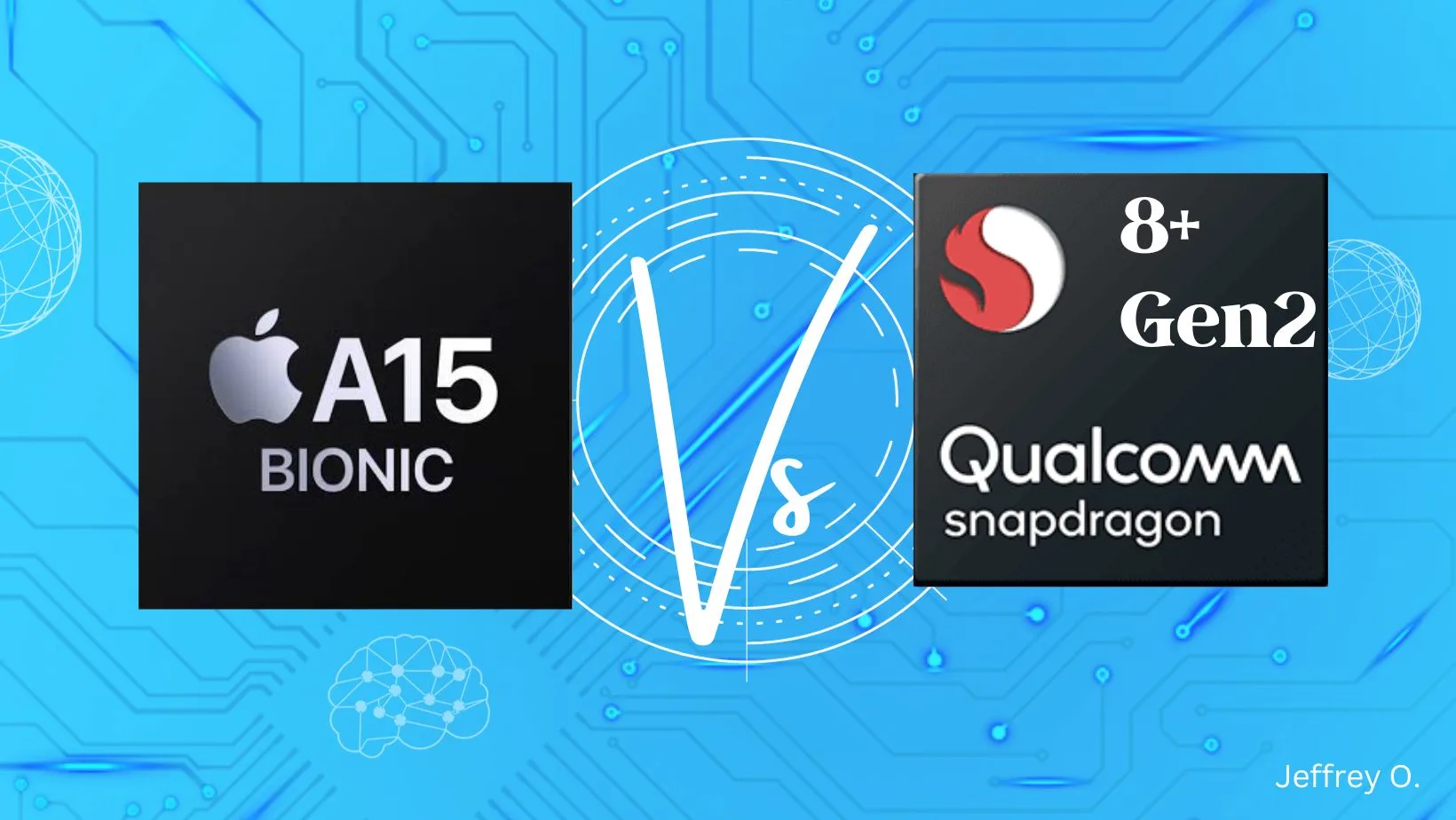Apple A15 Bionic vs. Snapdragon 8+ Gen 1: A showdown between two flagship veterans
The used phone market is making a comeback and so are older SoCs. Two recent SoCs that used to top the world are the Apple A15 Bionic and Snapdragon 8+ Gen 1. Which one is going to come out on top?
While the previous Apple flagships may no longer dominate tech discussions, they still maintain a strong demand. In this article, we bring two of these stalwarts into the ring for a head-to-head battle: the Apple A15 Bionic vs Snapdragon 8+ Gen 1.
The Apple A15 Bionic, although aging gracefully, stands as the elder statesman in this showdown. It held the prestigious title of Apple's flagship SoC for the year 2021. During its prime, it reigned as the undisputed leader in the world of smartphone SoCs.
In true Apple fashion, the A15 Bionic remains exclusive to Apple products. You can find this powerhouse SoC in devices such as the Apple iPhone SE 2022, iPhone 13 Mini, iPhone 13, iPhone 13 Pro, iPhone 13 Pro Max, iPhone 14, and iPhone 14 Plus.
In contrast, the Snapdragon 8+ Gen 1 emerged as Qualcomm's flagship for the year 2022. This upgraded iteration of the standard Snapdragon 8 Gen 1 brings substantial improvements to the table.
The Snapdragon 8+ Gen 1 follows the familiar Snapdragon tradition, attracting significant attention from both smartphone manufacturers and the wider public. It graces devices like the Poco F5 Pro, Realme GT 2 Master Explorer, Vivo iQOO Neo 7 Pro, Xiaomi 12T Pro, OnePlus 10T, Realme GT3, Asus ROG Phone 6, Nothing Phone 2, Samsung Galaxy Z Fold 4, among numerous others.
Now that we have enough background information, let's jump into the comparison properly.
(A15 Bionic vs Snapdragon 8+ Gen 1 Specs comparison table)
Performance of the A15 Bionic vs Snapdragon 8+ Gen 1
Comparing Apple's Bionic SoCs to Android-based SoCs is a bit tricky because these two SoCs employ substantially different architectures.
For CPU performance, the AnTuTu benchmark favors the Snapdragon 8+ Gen 1 slightly, boasting a score of 244,610, while the A15 Bionic secures the second position with 210,809 points. However, when we shift our focus to GeekBench, the tables turn. Here, the A15 Bionic shines as the superior SoC, exhibiting an impressive score of 1741 for single-core performance and 4815 for multi-core performance. Meanwhile, the Snapdragon 8+ Gen 1 takes second place with scores of 1312 for single-core and 4129 for multi-core performance.
This is a case of comparing apples to oranges, or should I say snapdragons. This has sparked fervent debates among proponents of each SoC. Nevertheless, from an informed standpoint, it's apparent that both SoCs deliver nearly equivalent performance levels.
Performance: Tie
Gaming on the A15 Bionic vs Snapdragon 8+ Gen 1
Comparing the A15 Bionic to the Snapdragon 8+ Gen 1 in terms of gaming yields a mixed verdict. GFXBench 3.1 suggests that the A15 Bionic features the superior GPU, while 3D WildLife proposes that the 8+ Gen 1 holds the GPU advantage. However, since the majority of games are developed for the Android ecosystem rather than iOS, this analysis leans toward the 8+ Gen 1 for gaming prowess.
RAM and Storage
When considering RAM and storage, the 8+ Gen 1 takes the lead by employing faster LPDDR5 (3200MHz) RAM. In contrast, the A15 Bionic relies on slower LPDDR4x (2133MHz) RAM, which results in improved multitasking, app switching, and CPU performance for the 8+ Gen 1. Nevertheless, the A15 Bionic outpaces the 8+ Gen 1 with its swift low-power NVMe storage compared to the 8+ Gen 1's slower UFS 3.1 storage.
Camera and Video
In the realm of camera capabilities, the 8+ Gen 1's support for 200MP cameras surpasses the A15 Bionic. It excels in photography, especially in low-light conditions. However, when it comes to video performance, the A15 Bionic outshines the 8+ Gen 1. A side-by-side comparison reveals that video captured by the A15 Bionic exhibits superior quality.
Network Connectivity
Network connectivity favors the 8+ Gen 1, which secures victory with significantly faster upload and download speeds, despite both SoCs supporting 4G and 5G capabilities.
Battery life
When it comes to battery life, despite the different TSMC fabrication processes (5nm for the A15 Bionic and 4nm for the 8+ Gen 1), both SoCs deliver similar battery performance.
Conclusion
In conclusion, while these SoCs follow different design philosophies, they offer comparable levels of performance, gaming, multimedia, camera, video capabilities, and battery life. Your selection should ultimately hinge on personal preferences and your preferred ecosystem.
